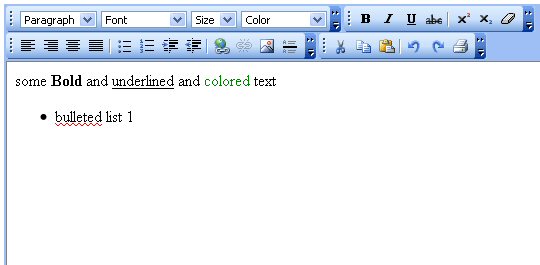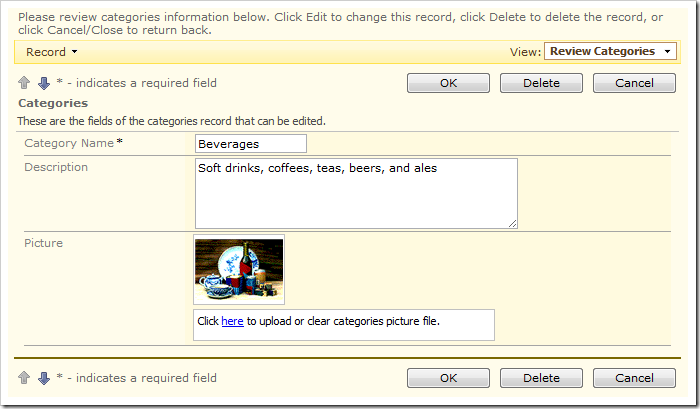

And it’s not just different text styles being preserved inside the editing area – you can actually paste rich text and its formatting will remain the way you saw it originally. This is the source of the fonts demonstrated in the previous screenshot and you can also see them being applied as styles to the containers.įurthermore, there was also copied text, which was there to show that the Editor comes with Clipboard support for all common operations – cut, copy and paste. That’s really neat when the user needs to be aware how his input is being handled behind the scenes, but should that not be enough, well the widget provides functionality to switch between the default ‘design’ and source view in a click of a button:
Rich text box in asp net full#
Apart from the tools on top, the control also conveniently displays the full current DOM path and the user can click on each DOM tree element to have its content highlighted in the editing area. One comprehensive editing experience only recognized after a visual demonstration:Įverything on the screenshot (well, except the width of the control I did alter so it would fit in this page) is as the widget creates it by default – fonts and sizes, bold and italic, underline and strikethrough, text alignment options, lists and bullets, indent control, etc. The best part is that among them can be found tools for rich text formatting that almost any user would immediately recognize and feel comfortable using. Almost everything the user has access to is located in a toolbar area on top and options are grouped neatly in relevant sets.


In its current implementation almost all of them are provided without the need for further customization, so from developer perspective there aren’t that many things you have to set and the users always get a handful. Features, features, features!Įven though it is not finished, the jQuery Html Editor widget has an impressive array of features. Once you have that done and you might want to access the HTML in the control and you can do that using a method provided in this post on our jQuery Forums’ section.
Rich text box in asp net code#
I will, of course, provide a combined piece of code you can use for reference ( assuming you have ‘Scripts’ and ‘themes’ folders by default) and adding the igHtmlEditor to the page is as trivial as it gets – an HTML DIV element as container and a line of script to create a new instance of the widget in JavaScript and it’s just as easy in ASP.NET MVC.
Rich text box in asp net how to#
Once more, I will encourage you to check out our Deployment Guide, where you can read exactly how to find and manage the required resources. The default styles, you might be already familiar already with, are also required. The latter is actually the only required script file to include after the jQuery ones. The script for the igHtmlEditor, however, is not included in the default “ig.ui.min.js” file, but rather in its own “ig.ui.”. The widget is built on top of jQuery UI, therefore as with other NetAdvantage for jQuery controls you will need first jQuery and then jQuery UI added to your page. It is also advisable if you use the latest service release version. For that reason, until its official release nothing set in stone, but then again, there’s also no reason not to give it a try and get to know the control ahead of time. Here should be mentioned the HTML Editor is CTP ( Community Technology Preview ) which mean it is still in the beta stage of its development. Even if you haven’t noticed, this kind of functionality is offered pretty much anywhere user generated content is supported – like this blog, the comments, forums, etc.Īnd now you can provide your users with that kind of functionality using the igHtmlEditor widget and much more! That is just an example but it is what my blog editor does as well, so those can be properly presented by the browser and not only – some servers block such content as potential threat. Transforming the opening and closing angle brackets ( “”) into equivalent HTML – “<”/”>”. WYSIWYG stands for ‘what you see is what you get’ (read on about it on Wikipedia), which is exactly what in its core this control is meant to provide. I am talking about the jQuery-based, WYSIWYG-implementing HTML Editor control. Along all the exciting features introduced for NetAdvantage for jQuery 11.2 release (read: new Hierarchical grid, tree, combo controls) and CTP Charting with Motion Framework – it’s not that surprising some controls didn’t get their full share of the spotlight.


 0 kommentar(er)
0 kommentar(er)
